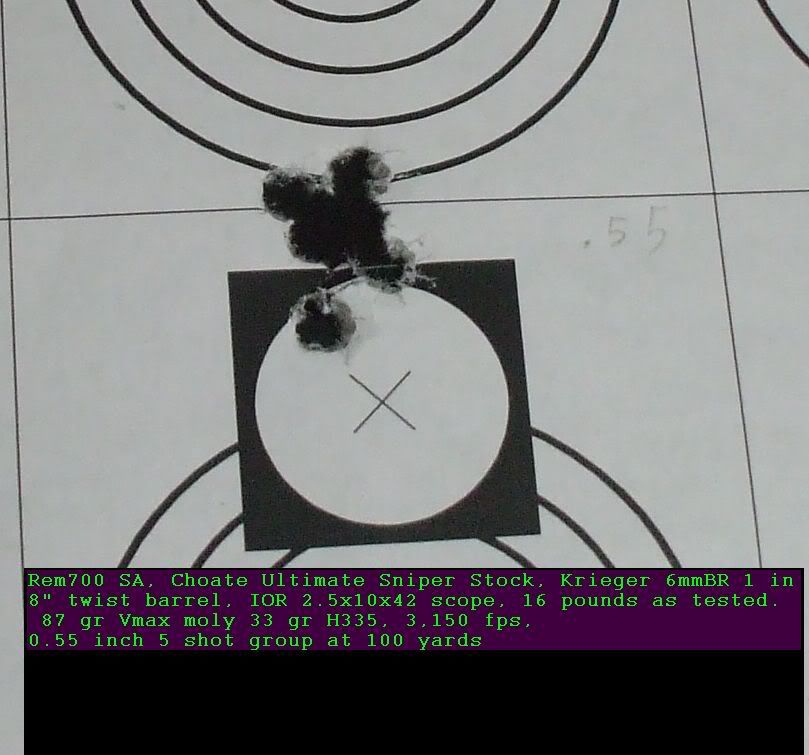In 1992 Bart Bobbitt wrote a formula for barrel wear.
https://groups.google.com/forum/#!search/rec.guns/iC-CoKQCeW8/UF0WINR94kAJ
| Bart Bobbitt |
<input type="text" tabindex="-1" role="presentation" style="border-width: 1px; border-style: solid; border-color: rgb(192, 192, 192) rgb(217, 217, 217) rgb(217, 217, 217); vertical-align: top; box-sizing: border-box; border-top-left-radius: 1px; border-top-right-radius: 1px; border-bottom-right-radius: 1px; border-bottom-left-radius: 1px; line-height: 27px; padding-left: 8px; color: rgb(34, 34, 34); height: 1px; opacity: 0; width: 1px; z-index: -1; overflow: hidden; position: absolute;">
<input type="text" tabindex="-1" role="presentation" style="border-width: 1px; border-style: solid; border-color: rgb(192, 192, 192) rgb(217, 217, 217) rgb(217, 217, 217); vertical-align: top; box-sizing: border-box; border-top-left-radius: 1px; border-top-right-radius: 1px; border-bottom-right-radius: 1px; border-bottom-left-radius: 1px; line-height: 27px; padding-left: 8px; color: rgb(34, 34, 34); height: 1px; opacity: 0; width: 1px; z-index: -1; overflow: hidden; position: absolute;"> 11/4/92 |
<tbody>
</tbody>
<input type="text" tabindex="-1" role="presentation" style="border-width: 1px; border-style: solid; border-color: rgb(192, 192, 192) rgb(217, 217, 217) rgb(217, 217, 217); vertical-align: top; box-sizing: border-box; border-top-left-radius: 1px; border-top-right-radius: 1px; border-bottom-right-radius: 1px; border-bottom-left-radius: 1px; line-height: 27px; padding-left: 8px; color: rgb(34, 34, 34); height: 1px; opacity: 0; width: 1px; z-index: -1; overflow: hidden; position: absolute;">
<input type="text" tabindex="-1" role="presentation" style="border-width: 1px; border-style: solid; border-color: rgb(192, 192, 192) rgb(217, 217, 217) rgb(217, 217, 217); vertical-align: top; box-sizing: border-box; border-top-left-radius: 1px; border-top-right-radius: 1px; border-bottom-right-radius: 1px; border-bottom-left-radius: 1px; line-height: 27px; padding-left: 8px; color: rgb(34, 34, 34); height: 1px; opacity: 0; width: 1px; z-index: -1; overflow: hidden; position: absolute;">
I finally completed my research on a way to calculate how many rounds
a rifle barrel can be expected to deliver its accuracy level. By that,
I mean the barrel can be expected to have an average group size for
so many rounds before that average group size starts to get larger.First, the rule-of-thumb formula I derived will produce a barrel accuracy
life of about 3000 rounds.
Second, if a lot of rapid fire (one shot every 5 to 10 seconds) is done,
the accuracy life will be less.
Third, if full-auto or very fast fire (a few shots per second, or one shot
every second) is done, accuracy life will be much less.
Fourth, the accuracy levels are for ranges through 600 yards. Once the
barrel life calculated limit is reached, groups will probably start to
get bigger at the longer ranges before they are noticeably bigger at the
shorter ranges.
My formula, or rule-of-thumb process, is:
1. Calculate the bore area in square millimeters.
2. Use one grain of powder for each square millimeter. This is what
I call the reference, or base powder charge.
Example: .30 caliber bore = 45.6 square millimeters.
Base powder charge for .30 caliber is 45.6 grains.
A .30 cal. cartridge that burns 45.6 grains of powder should give a
barrel life of about 3000 rounds of good accuracy.
3. If a larger cartridge is used and it burns more powder, the
accuracy life in rounds for that bore size is reduced. The amount
of reduction is determined by
a. Divide the increased charge by the base charge, then square
the answer.
b. Divide that answer into 3000.
Example: .28 caliber bore has a base charge of 38.5 grains.
Cartridge burns 57.8 grains of powder.
(57.8/38.5) squared is 2.25.
3000 divided by 2.25 is 1,333 rounds.
If anyone can shoot a hole through this theory, I welcome that shot. This
is more or less an emperical process based on accurate barrel life in
several calibers as reported to me by lots of folks. All I did was study
the data and determine what math would give a best-fit formula.
And if someone has a better method, I'd like to know what it is. My
formulas may not be the best.
I was posting on the same forum, but did not really notice Bart until May 1997 when Krieger Barrels advertised that Bart had used on of their barrels to shoot a 3.325" 20 shot group at 800 yards with his 308 palma rifle.
https://groups.google.com/forum/?fromgroups=#!topic/rec.guns/iL7zv-cktJc
I should say that Bart and I are both old men that post on forums, but he has much higher standards than me.
I bought a shot out $100 Krieger 6mmBRX barrel and re chambered it for 6mmBR, but it on an old $180 Rem700, put it in a $30 Choate Ultimate sniper stock, shot it once in 2010, got a 0.55" 5 shot group at 100 yards, and have not shot it since. I am happy with that project.
So a shot out barrel for a top world competitor at Camp Perry, like Bart, becomes a welcome input for a bottom feeder lousy shot low standards shooter like me.
Bottom feeder me at 100 yards with shot out Krieger
Bart Bobbitt at 800 yards with new Krieger
20-shot group shot at 800 yards by "Bert Bobbit [sic] with
his Krieger Barrelled PALMA rifle." Now this group has a .942" mean
radius, with an extreme spread of 3.325.



